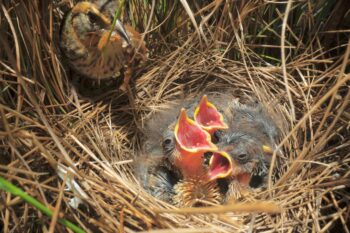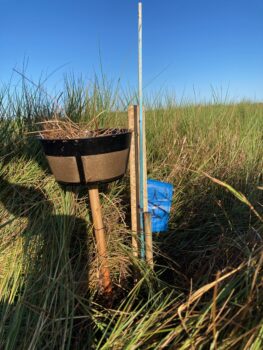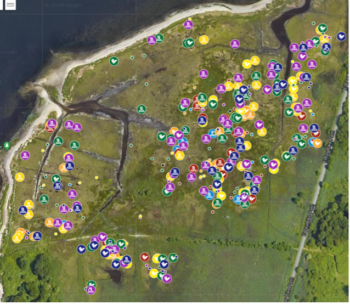
photo credit: Jason Jaacks
We are very grateful to Warren Land Trust for permission to study the breeding ecology of Saltmarsh Sparrows (SALS) at Jacob’s Point (JP) which has provided stakeholders (RIDEM, Save The Bay, USFWS) with baseline data that provides valuable guidance in generating management strategies.
These saltmarsh-obligate birds are heading precariously close to extinction, primarily due to flooding with secondary nest failures due to predation. On this 7 year composite map (below) that Jim O’Neill created, waterfall icons represent flooded nests; solid dots are depredated nests; bird icons reveal successful nests.
Based upon this data, we will determine where to lift nests that are at the highest risk for flooding in 2024, using coffee filters as nest protectors which are mounted upon stakes that will be raised above the flooding threshold.
It has been a busy “off season” while writing grant applications, submitting papers for publication, measuring museum specimens of SALS to compare to modern birds, securing funding for student interns, and presenting findings at Audubon’s annual Conservation Symposium.

Raised nest with protective coffee filter. photo credit: Deirdre Robinson
The sparrows returned to JP during the first week in May, when we began the search for cryptic nests and test the hypothesis that nest lifting can postpone their date with extinction. If this novel intervention is successful at JP, we hope that our protocol will be scalable to saltmarshes from VA to ME, where Saltmarsh Sparrows exclusively breed.
As E.O. Wilson famously said, “Conservation biology is a discipline with a deadline.”
Thanks to the Warren Land Trust for allowing us to postpone the extinction deadline for this valuable bird who is an indicator species for the health of the saltmarsh ecosystem.
-Deirdre Robinson, SSRI Co-Director

map created by Jim O’Neill





